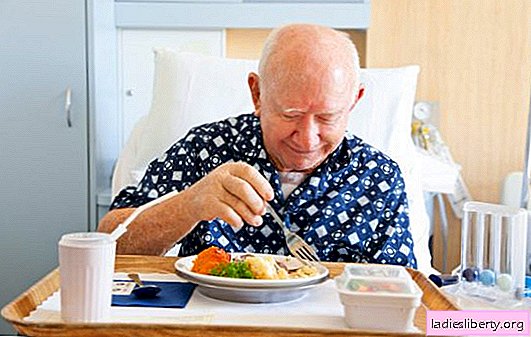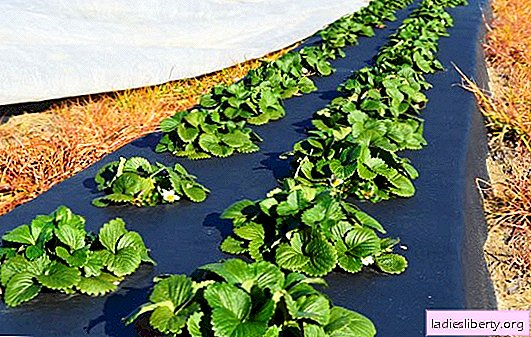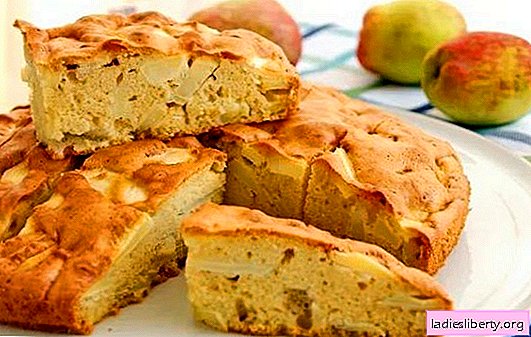
Peptic ulcer disease - a disease that has severe complications in the form of perforation, penetration and bleeding, dangerous to health and life. Therefore, treatment should be timely and in full. In addition to drug therapy, nutrition in ulcers plays an important role.
In the active period and in the stage of remission, the diet for an ulcer is part of the therapeutic measures that must be strictly observed.
Ulcer nutrition is an important part of treatment
The purpose of medical nutrition for ulcers is to create conditions for eliminating:
• pain symptom;
• dyspeptic symptoms;
• inflammation;
• decrease in high acidity;
• successful scarring or maintaining a normal state of the gastric mucosa.
Frequent meals in small portions play a role. This helps to eliminate inflammation and sparingly affects the mucous membrane of the digestive tract.
Diet tables for ulcers
At different periods of the disease, nutrition with an ulcer is different. With increased acidity of the stomach, several dietary tables have been developed by the doctor - nutritionist Mikhail Pevzner (there are 15 in total):
• table number 1A according to Pevzner - appointed for 6 - 10 days, in the acute period, involves the most gentle effect of food on the stomach of mechanical, temperature, chemical factors;
• table No. 1B - is used for 2 weeks, during the period of ulcerative scarring, purpose: unsharp restriction of all types of aggression on the stomach;
• table number 1 - treatment for six months, moderate gastric gentleness.
The basic principles of nutrition
The food regimen for an ulcer consists in the regular intake of food in small quantities - this contributes to the rapid processing and absorption of food. The use of developed diets and methods of processing products consolidates the therapeutic effect obtained and delays relapse.
Since the main aggressive factor causing the formation of ulcers is hydrochloric acid, stimulants of secretion of gastric juice and products irritating the mucous membrane are contraindicated during dietary nutrition. The consistency of the prepared dish is also important - the food should quickly leave the stomach. Therefore, a mushy and liquid meal is recommended. The temperature regime also refers to important nutritional factors: very hot or cold is contraindicated. The food should be warm, otherwise the synthesis of enzymes is inhibited, and the epithelization of the gastric mucosa is slowed down.
An important point is the strict limitation of salt. The allowed amount is 10 g per day. Exceeding it leads to the resumption of the inflammatory process in the stomach.
Allowed Products
Given this, the diet should consist of warm, non-coarse, mashed food with minimal sokogonnym action. The products from which such dishes can be prepared include:
• eggs (better - quail);
• milk;
• boiled meat;
• cereals in milk.
Milk and the dishes that are cooked on it are especially useful, since the protein contained in milk accelerates the scarring of a peptic ulcer.
Porridge (oatmeal, rice, buckwheat) are permissible in the mucous form, as well as soups - only in water or milk. The cooked cereals are rubbed and butter is added. Soups, unlike cereals, are only filtered, but not ground, and after being ready, they put oil in them.
Honey - a special product. It reduces inflammation, heals ulcers, reducing the secretion of hydrochloric acid and pain. It increases hemoglobin levels. But it is not recommended to abuse it: you can take no more than 1 teaspoon 3-4 times a week.
Contraindicated Products
Products that are contraindicated in ulcers include:
• Containing large amounts of fiber - bran bread, raw vegetables and fruits with rare exceptions;
• stimulating increased production of hydrochloric acid - all spices and seasonings, rich broths;
• strong decoctions of vegetables with a high content of extractives, sour fresh vegetables and fruits;
• smoked, fried, stewed dishes, marinades, canned goods;
• rye bread, stews of meat and fish, hard-boiled eggs;
• low fat milk, whey, dairy products;
• irritating mucous membranes (onions, garlic, peppers, tomatoes, chocolate, cranberries, citrus fruits);
• from drinks - carbonated, alcohol, strong tea and coffee;
• hard-to-digest cereals - millet, barley, corn, pearl barley - are excluded from the diet for a long time;
• hard-boiled eggs, fried eggs are poorly digested - in this form they can not be used.
All of these products irritate the gastric mucosa with a chemical composition.
In the phase of an active ulcer, any bread is prohibited. Simple carbohydrates are limited due to their stimulating effect on the nervous system.
Coarse fiber is contraindicated in ulcers. White cabbage contains fiber, therefore, on the one hand, it is not recommended for inclusion in the diet. But cabbage juice is very useful for ulcers, because it contains the necessary vitamins and, above all, vitamin U, which promotes the healing of ulcers, and ascorbic acid. In addition, it has bactericidal properties. Therefore, you can drink cabbage juice diluted with water at 50%. A broth from rose hips and wheat bran are also recommended.
Ways to cook food for ulcer
You can cook dishes by steam, boil in a water bath or steam, bake. Steamed vegetables and are used only in mashed form. Non-mashed can only eat pumpkin and zucchini. The rest - in the form of mashed potatoes or souffle. The meat must be cooked in pieces, then the primary broth should be drained, and the meat should be boiled in hot water until tender. Use it in the future for cooking stews. In this way, extractive substances are removed from it as much as possible.
Menu for a week with exacerbation
Approximate menu allowed for food with an ulcer:
Monday:
First breakfast: boiled buckwheat, dried biscuit.
Second breakfast: mashed boiled vegetables.
Lunch: boiled fish fillet.
Snack: soft-boiled egg.
Second afternoon snack: boiled rice porridge, steamed.
Dinner: cottage cheese souffle.
Tuesday
First breakfast: boiled rice porridge.
Lunch: boiled veal in the form of mashed potatoes, boiled beets.
Lunch: buckwheat slimy soup.
Snack: cottage cheese casserole.
Second afternoon snack: strawberry jelly.
Dinner: semolina porridge.
Wednesday
First breakfast: rice.
Second breakfast: soft-boiled egg.
Lunch: slimy oatmeal soup, chicken meatballs.
Snack: buckwheat porridge.
Second afternoon snack: soup - mashed potatoes from boiled vegetables.
Dinner: boiled mashed apples.
Thursday
First breakfast: rice.
Second breakfast: soft-boiled egg.
Lunch: cottage cheese casserole
Snack: buckwheat porridge.
Second afternoon snack: porridge made from oatmeal, cooked on water.
Dinner: peach mousse.
Friday
First breakfast: mucous buckwheat porridge.
Second breakfast: mashed potatoes from boiled apples and pears without stones and peel.
Lunch: boiled fish with boiled carrots.
Snack: oatmeal.
Second afternoon snack: boiled beets, grated.
Dinner: milk jelly.
Saturday
First breakfast: semolina porridge.
Second breakfast: pear-free jelly without sugar.
Lunch: oatmeal.
Snack: boiled beets, grated.
Second afternoon snack: cottage cheese, baked with honey.
Dinner: broth of wild rose.
Sunday
First breakfast: boiled rice porridge.
Second breakfast: pear - applesauce from boiled fruit.
Lunch: slimy rice soup, rabbit souffle.
Snack: boiled mashed potatoes from zucchini and pumpkin.
Second afternoon snack: barley soup.
Dinner: milk jelly.
Gradually, as the ulcer heals, the condition improves and the inflammatory process in the stomach decreases, the diet expands, new products are introduced. The prognosis of treatment depends on compliance with all nutritional rules for ulcers. With appropriate treatment and proper nutrition, the ulcer heals quickly. To avoid relapse, you must adhere to the principles of proper nutrition for life.











